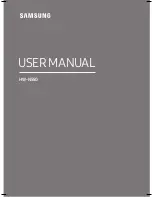
34
Rinnai Commercial Hybrid System Installation and Operation Manual
When installing PVC/CPVC Common Vent, follow these guidelines:
•
Avoid sharp bends or tees in the vent system.
These vent components create additional
restrictions that could reduce performance of
the water heaters.
•
PVC combustion air and exhaust should
terminate with elbow or tee pointing down.
This will stop unwanted moisture from entering
the vent system.
•
Fire rated penetrations shall be firestopped.
Contact your vent supplier or local firestop
manufacturer for appropriate firestop methods.
•
Examine all vent components for damage prior to
installation.
•
PVC/CPVC vent systems must be free to expand and
contract. Refer to the vent manufacturer
’
s installation
instructions for appropriate support methods.
•
PVC/CPVC venting must include unrestricted vent
movement through walls, ceilings, and roof
penetrations.
•
Use only PVC/CPVC primer and cement approved for
use by the vent manufacturer.
•
Refer to vent manufacturer
’
s installation instructions
for proper joint assembly procedures and products.
•
PVC/CPVC common venting should include a
condensate drain and trap between the header and
vent length. Condensate trap must include a loop that
can hold 6 in. (15 cm) of water. See
“
PVC/CPVC
Common Vent Installation
”
illustration on this page.
•
Keep solvents away from heat, sparks, flames and all other sources of ignition.
•
Do not solder, cut or weld until all vapors have dissipated.
•
PVC solvents are heavier than air causing them to settle at low points of the system.
•
Before Using PVC solvent
−
Disconnect power to the water heater.
−
Remove the front cover of the water heater.
−
Ensure areas around the water heater and PVC venting are all well ventilated.
−
Allow all vapors to dissipate before applying power to the system or introducing any other source of ignition.
PVC solvents (primer and glue) can be extremely flammable. Vapors may cause a
flash fire or explosion resulting in property damage, personal injury or death.
WARNING
DO NOT
DO NOT mix vent pipe, fittings
or joining methods
from different vent manufacturers.
DO NOT attempt to repair damaged vent. Damaged
vent components must be replaced.
DO NOT use short radius elbows in the common
vent system.
ACCEPTABLE
ACCEPTABLE
NOT ACCEPTABLE
90° Elbows,
Long Sweep
90° Elbows,
Short Sweep
90° Elbows,
Close Turn
HEADER
VENT
PVC/CPVC Common Vent Installation
Schedule 40 PVC/CPVC Common Vent Guidelines
Содержание CHS199100CU
Страница 51: ...Rinnai Commercial Hybrid System Installation and Operation Manual 51 Notes...
Страница 52: ...100000571 03 10 2019...
















































